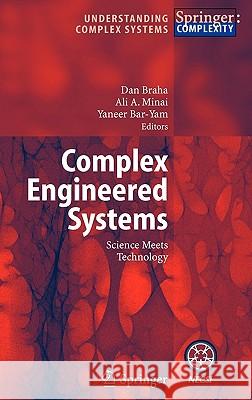Complex Engineered Systems: Science Meets Technology » książka
Complex Engineered Systems: Science Meets Technology
ISBN-13: 9783540328315 / Angielski / Twarda / 2006 / 386 str.
Recent advances in science and technology have led to a rapid increase
in the complexity of most engineered systems. In many notable cases,
this change has been a qualitative one rather than merely one of magnitude.
A new class of Complex Engineered Systems (CES) has emerged as a result
of technologies such as the Internet, GPS, wireless networking, micro-robotics, MEMS, fiber-optics and nanotechnology. These complex engineered systems are composed of many heterogeneous subsystems and are characterized by observable complex behaviors that emerge as a result of nonlinear spatio-temporal interactions among the subsystems at several levels of organization and abstraction. Examples of such systems include the World-Wide Web, air and ground traffic networks, distributed manufacturing environments, and globally distributed supply networks, as well as new paradigms such as self-organizing sensor networks, self-configuring robots, swarms of autonomous aircraft, smart materials and structures, and self-organizing computers. Understanding, designing, building and controlling such complex systems is going to be a central challenge for engineers in the coming decades.











